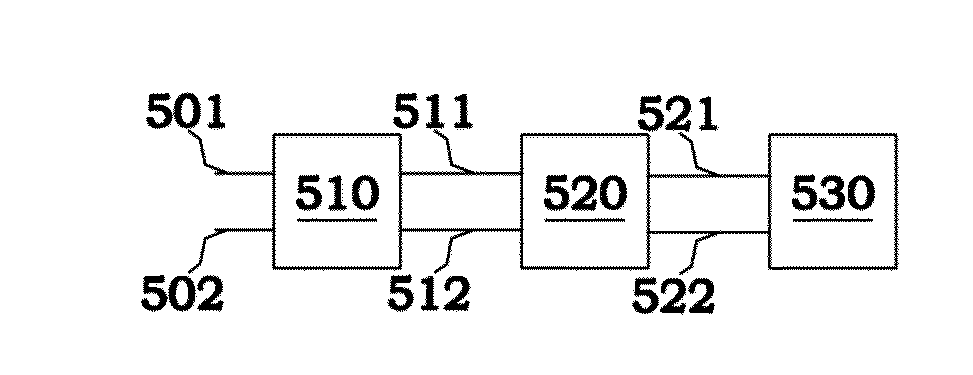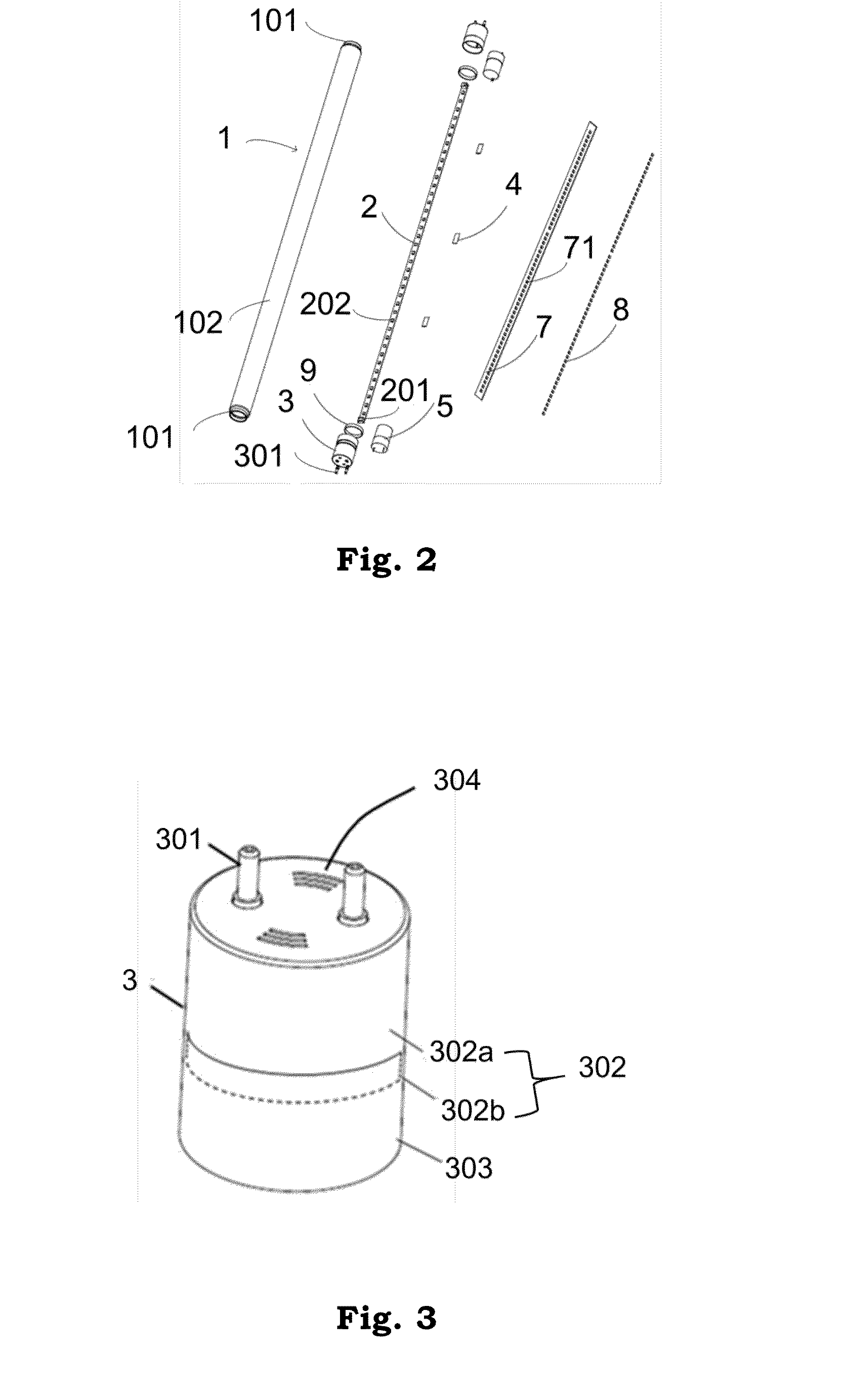First, the typical circuit board is rigid and allows the entire lamp tube to maintain a
straight tube configuration when the lamp tube is partially ruptured or broken, and this gives the user a false impression that the LED tube lamp remains
usable and is likely to cause the user to be electrically shocked upon handling or installation of the LED tube lamp.
Second, the rigid circuit board is typically electrically connected with the end caps by way of
wire bonding, in which the wires may be easily damaged and even broken due to any move during manufacturing, transportation, and usage of the LED tube lamp and therefore may disable the LED tube lamp.
Third, the lamp tube and the end caps are often secured together by using
hot melt adhesive or
silicone adhesive, and it is hard to prevent the buildup of excess (overflown)
adhesive residues. This may cause light blockage as well as an unpleasant aesthetic appearance. In addition, a large amount of manpower is required to clean off the excessive adhesive buildup, create a further production
bottleneck and inefficiency. Also, bad heat dissipation of the power supply components inside the end caps can cause a high temperature and therefore reduces
life span of the
hot melt adhesive and simultaneously disables the adhesion between the lamp tube and the end caps, which may decrease the reliability of the LED tube lamp.
Fourth, the typical lamp tube is a long cylinder sleeved with the end caps at ends by means of adhesive, in which the end caps each has a larger
diameter than that of the lamp tube. In this way, a packing box for the lamp tube—which is also typically in cylinder shape—will contact only the end caps such that only the end caps are supported and the connecting part between the end caps and the lamp tube is apt to break, such as disclosed LED tube lamp in a published US
patent application with publication no. US 2014226320 and a published CN
patent application with publication no. To address this issue, a published US
patent application with publication no. US 20100103673 discloses an end cap that is sealed and inserted into a glass made lamp tube. However, this kind of lamp tube is subjected to inner stresses at its ends and may easily break when the ends are subjected to external forces, which may lead to product defects and quality issues.
Fifth, grainy visual appearances are also often found in the aforementioned conventional LED tube lamp. The LED chips spatially arranged on the circuit board inside the lamp tube are considered as spot light sources, and the lights emitted from these LED chips generally do not contribute uniform
illuminance for the LED tube lamp without proper optical manipulation. As a result, the entire tube lamp would exhibit a grainy or non-uniform illumination effect to a viewer of the LED tube lamp, thereby negatively affecting the visual comfort and even narrowing the viewing angles of the lights. As a result, the quality and aesthetics requirements of average consumers would not be satisfied. To address this issue, the
Chinese patent application with application no. CN 201320748271.6 discloses a
diffusion tube is disposed inside a glass lamp tube to avoid grainy visual effects.
However, the disposition of the
diffusion tube incurs an interface on the
light transmission path to increase the likelihood of total reflection and therefore decrease the light outputting efficiency.
In addition, the optical rotatory absorption of the
diffusion tube decreases the light outputting efficiency.
Further,
circuit design of current LED tube lamps mostly doesn't provide suitable solutions for complying with relevant certification standards and for better compatibility with the driving structure using an electronic
ballast originally for a
fluorescent lamp.
However, there are a considerable number of electronic components in an LED tube lamp, and therefore consideration of the impacts caused by the
layout (structure) of the electronic components is important, resulting in difficulties in complying with such standards.
Therefore, using an LED tube lamp with an electronic
ballast impacts the resonant
circuit design of the electronic
ballast, causing a compatibility problem.
Generally, a program-start ballast will detect the presence of a filament in a
fluorescent lamp, but traditional LED driving circuits cannot support the detection and may cause a failure of the filament detection and thus failure of the starting of the LED tube lamp.
Further, electronic ballast is in effect a
current source, and when it acts as a power supply of a DC-to-
DC converter circuit in an LED tube lamp, problems of
overvoltage and
overcurrent or undervoltage and undercurrent are likely to occur, resulting in damaging of electronic components in the LED tube lamp or unstable provision of lighting by the LED tube lamp.
Since the voltages and frequency spectrums of these types of signals differ significantly, simply performing a rectification to produce the required DC driving signal in an LED tube lamp is not competent at achieving the LED tube lamp's compatibility with traditional driving systems of a
fluorescent lamp.
 Login to View More
Login to View More 


